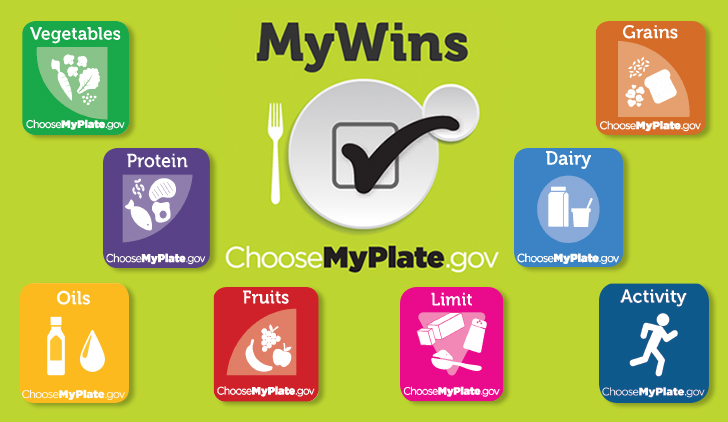
The 2015 – 2020 Dietary Guidelines for Americans, released earlier this year by the United States Departments of Agriculture (USDA) and Health and Human Services (HHS), is a report containing a broad range of nutritional information and guidelines for the general public. It’s designed to help all of us make better food and beverage choices. And with obesity on the rise, this couldn’t come at a better time.
“The dietary guidelines are designed to promote a diet that meets the nutrition needs of individuals ages 2 and up,” said Corporate Dietitian and Nutritionist Jennifer Patzkowsky. “And this new report focuses on healthy eating patterns, which are the combinations of foods and beverages that make up an individual’s complete dietary intake over time.”
While the previous guidelines offered advice on individual nutrients and specific foods and food groups, the latest edition promotes healthy eating patterns, which have the potential to impact your overall health over the course of your lifetime.
“It’s important to remember that nutrition and health are closely related,” said Jennifer. “By following the recommendations for healthy eating patterns, you can choose an enjoyable diet at an appropriate calorie level to help you reach and maintain a healthy body weight, support nutrient adequacy and reduce the risk for chronic disease.”
The guidelines reflect a growing body of evidence showing that healthy eating patterns and regular physical activity can help reduce the risk of chronic diseases like obesity, heart disease, high blood pressure and type 2 diabetes.
Digesting the guidelines
According to the USDA’s guidelines, a healthy eating pattern should include
- a variety of vegetables: dark green, red and orange; legumes (beans and peas); starches and other vegetables
- fruits, especially whole fruit
- grains, at least half of which are whole grain
- fat-free or low-fat dairy, including milk, yogurt, cheese and/or fortified soy beverages
- a variety of protein foods, including seafood, lean meats and poultry, eggs, legumes (beans and peas), soy products and nuts and seeds
- oils, including those from plants: canola, corn, olive, peanut, safflower, soybean and sunflower.
Oils also are naturally present in nuts, seeds, seafood, olives and avocados.
The guidelines also recommend
- limiting added sugars. Less than 10 percent of your daily calories should come from added sugars — not counting naturally occurring sugars found in fruits and milk. Limit saturated and trans fats found in butter, non-lean meats and
whole milk to less than 10 percent of your calories per day. Replace these fats with unsaturated fats like olive oil, avocados or nuts. - cutting down on salt. Adults and children ages 14 years and older should limit sodium to less than 2,300 mg per day, and children younger than 14 years should consume even less. Adults with high blood pressure or at risk of high blood pressure would benefit from a further reduction to 1,500 mg per day. Check the Nutrition Facts label to compare the sodium contents of different foods. Eating at home more often or cooking foods from scratch may help you to control the sodium content of dishes.
- participating in regular exercise. According to HHS, adults need at least 150 minutes of moderate intensity physical activity each week, which includes muscle-strengthening exercises on two or more days each week. Children ages 6 to 17 years need at least one hour of physical activity per day, including aerobic, muscle-strengthening and bone-strengthening activities.
Making changes to eating patterns can be overwhelming. The new guidelines encourage making small shifts during the day so better choices become routine. Consider adding a piece of fruit as an afternoon snack, serving a salad with dinner, replacing your canned soda with water or enjoying a handful of almonds instead of a cookie. Over time, these small shifts can end up making a big difference in your overall eating pattern. Visit www.ChooseMyPlate.gov for additional ideas.


